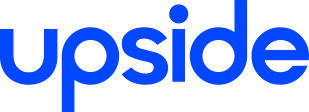This article is brought to you by Upside.

The demand for fuel is lessening as consumers watch their spending, remote work remains, and electric vehicles enter the market, among other factors. This leaves convenience and fuel retailers feeling increased pressure to acquire new customers and give existing customers a reason to return.
“C-stores can no longer lean on overall demand to carry their business and expect the same amount of profit and growth,” said Kevin Hart, Senior Vice President of Fuel, Upside, a retail technology company. “In order to win in today’s declining market, c-stores need to have the mindset of aggressive, innovation-driven growth.”
To drive this type of growth, retailers should include personalized customer engagement in their marketing strategies. In fact, Hart says that personalization is the future of consumer engagement because it allows a business to meet each consumer’s unique desires without impacting sales that would’ve already taken place.
“Retailers should use personalization to hone in on exactly what each customer wants and expects from their business, which would then increase profit margins on a per-user basis,” he said. “This individualized approach allows retailers to change behaviors, which then increases the value of their business, resulting in increased profitability.”
Upside’s top-rated app and network of partner apps deliver personalized promotions to millions of customers, ensuring that they purchase from participating stations instead of the competition. Through Upside's algorithm, consumers receive personalized promotions based on their credit card purchases within the app.
Instead of giving everyone a blanket promotion or lowering prices to compete with the competition, c-stores can aggressively acquire new customers without giving away more profit than needed, according to Hart.
“I may receive five cents off at a specific c-store because that’s all it takes to get me to shop at the location, but another customer may need 10 cents off in order to shop,” he said.
Upside guarantees that if a promotion offered to a consumer is too high and margins are impacted, Upside eats the cost of the promotion.
“We only share on profit that we can prove came from Upside,” Hart said. “Our goals align with the retailer’s goals in a profit-share model.”
Retailers work with Upside to ensure that their promotions are within a set margin, and Upside's personalization can drive customers to higher margin areas of a fuel retailer’s business to boost customer spending.
Here’s how to get started with Upside.
This is the final installment of a two-part NACS Daily series on how fuel retailers can use personalized digital promotions to increase profit and loyalty. Don’t miss Upside’s recent report, “Thriving in a Declining Market: Strategies for Growing Your Fuel Business”.